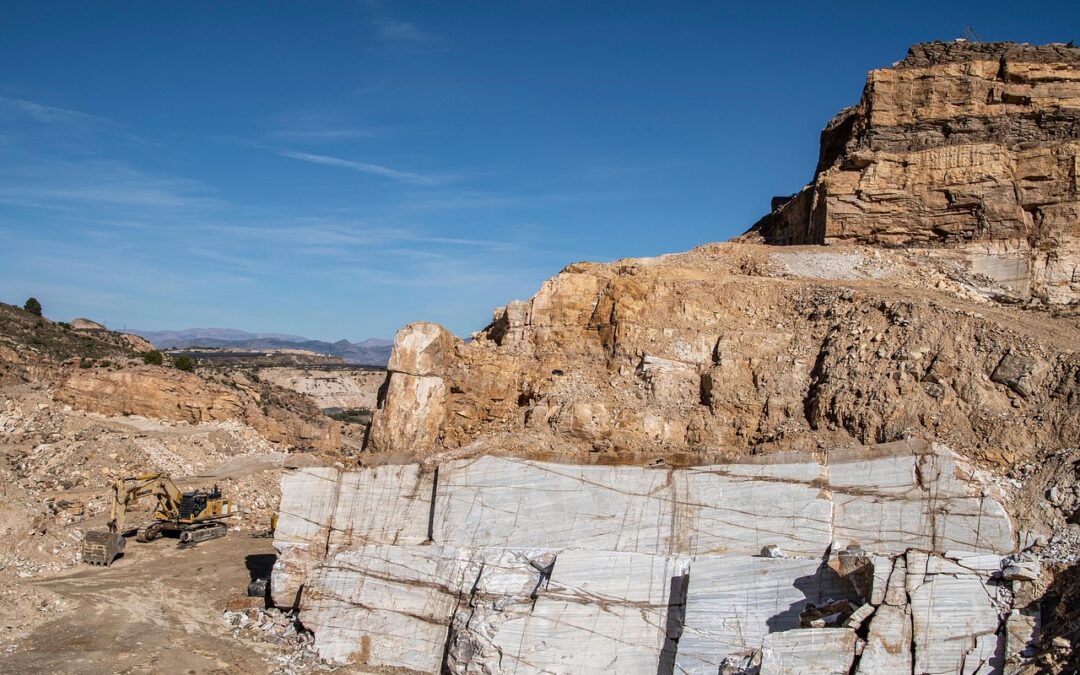Water management is crucial for ensuring the safety and stability of highwalls in mining operations. Highwall safety is a major concern, as water buildup can cause soil erosion, slope instability, and collapses. Effective water management reduces these risks and supports mining sustainability by minimizing environmental impacts and meeting regulatory standards. By using advanced monitoring systems and water control practices, mining companies can improve safety, reduce downtime, and boost mine performance. This article explores the role of water management in mining, focusing on highwall stability, drainage systems, and recent advancements in water control technology.
Importance of Water Management in Mining Operations
Water management is critical in mining, especially for ensuring highwall safety and stability. Water from rainfall, groundwater, or runoff can weaken highwalls, causing erosion and collapses. Proper water management controls water flow and retention, reducing these risks. Effective strategies help minimize accidents, maintain site integrity, and keep workers safe.
The Role of Drainage Systems in Preventing Highwall Failures
Drainage systems are essential for effective water management in highwall mining operations. They help divert excess water from the highwall, preventing accumulation and pressure buildup. Properly installed systems channel surface water, stopping infiltration that weakens the highwall’s integrity. Common systems include French drains, culverts, and ditches, all designed to manage water flow. Without efficient drainage, water can saturate the highwall, leading to failures like landslides or rockfalls.
Best Practices for Minimizing Water Impact on Highwalls
To minimize the impact of water on highwalls, several best practices should be followed. First, effective drainage systems must be installed and maintained to divert water away from high-risk areas. Additionally, waterproofing highwall surfaces can help reduce water infiltration. Implementing regular inspections for signs of erosion or cracks in highwall surfaces is essential for early detection and mitigation. Slope management is another crucial practice, as it involves adjusting the angle of the highwall to reduce water accumulation. By focusing on these best practices, mining operations can effectively manage water and reduce the likelihood of highwall instability.
Techniques for Effective Water Control in Highwall Areas
When managing water in highwall mining areas, several techniques can be employed to enhance control over water flow. Diversion channels are often used to redirect water away from high-risk zones, while catchment basins are designed to collect and store water before it reaches the highwall. Additionally, erosion control methods, such as the use of geotextiles and vegetation, help stabilize the soil and prevent water from eroding the surface. The combination of these techniques ensures that water is kept at safe levels, thereby maintaining the structural integrity of the highwall and preventing hazardous conditions.
Water Management Successes and Failures
There have been numerous instances where water management either succeeded or failed in maintaining highwall safety. Successful examples often involve the implementation of advanced drainage systems, regular inspections, and a proactive approach to water flow control. For instance, a well-maintained diversion system can prevent water from infiltrating the soil and causing erosion, leading to safer mining environments. However, there have also been instances where inadequate water management led to disastrous highwall collapses. These failures usually stem from neglected drainage systems, poor maintenance, or a lack of awareness about the role of water in highwall stability. By learning from these successes and failures, the industry can better understand how to approach water management to ensure optimal safety.
Regulatory Standards for Water Management in Mining
Governments and regulatory bodies have established specific guidelines for water management in mining operations. These regulations are designed to ensure that mining companies implement proper measures to control water flow and prevent accidents related to highwall instability. These standards often include requirements for drainage system design, the frequency of inspections, and the handling of water runoff. In addition, regulations may mandate that mining operators adopt best practices for erosion control and highwall stabilization. Compliance with these regulatory standards not only ensures safety but also helps minimize the environmental impact of mining activities.
Technological Advances in Water Monitoring and Control
Technological advancements have significantly enhanced water management in highwall mining operations. Modern tools such as real-time water monitoring systems enable mining operators to track water levels and flow in real-time, allowing for quick action if conditions change. Additionally, advancements in hydrological modeling help predict potential water-related issues before they occur. These technologies help operators make informed decisions about water diversion, drainage, and erosion control, ultimately reducing the risk of highwall failures. By adopting these innovations, mining operations can manage water more effectively and improve overall safety and efficiency.

Environmental Impacts of Water in Highwall Mining
The management of water is not only critical for safety but also for environmental protection. Improper water handling can lead to severe environmental consequences, such as soil erosion, sedimentation of nearby water bodies, and contamination of local groundwater. Mining companies must implement effective water management practices to minimize these impacts. This includes maintaining proper drainage systems, controlling water runoff, and ensuring that water collected from the mining site is not harmful to the surrounding ecosystem. By focusing on environmental responsibility, mining operations can ensure that their activities do not negatively impact the natural surroundings.
Future Trends in Water Management for Highwall Safety
As the mining industry continues to evolve, the future of water management for highwall safety looks promising. Emerging technologies, such as automated water management systems and AI-driven analytics, are set to transform how water is monitored and controlled on mining sites. Additionally, there is a growing focus on sustainable practices, with more mining companies adopting water recycling systems and environmentally friendly erosion control methods. These trends will not only improve highwall safety but also promote responsible resource management and reduce the environmental footprint of mining operations.
Strengthening Highwall Safety with Comprehensive Water Management Strategies
Water management is an integral part of ensuring highwall safety in mining operations. By implementing effective drainage systems, adopting the latest technological advancements, and adhering to regulatory standards, mining companies can mitigate the risks associated with water in highwall areas. Understanding the environmental impacts of water and adopting sustainable practices will help safeguard the ecosystem while enhancing the safety and efficiency of mining operations. Ultimately, comprehensive water management strategies are crucial to strengthening highwall safety and maintaining the long-term success of mining projects.

